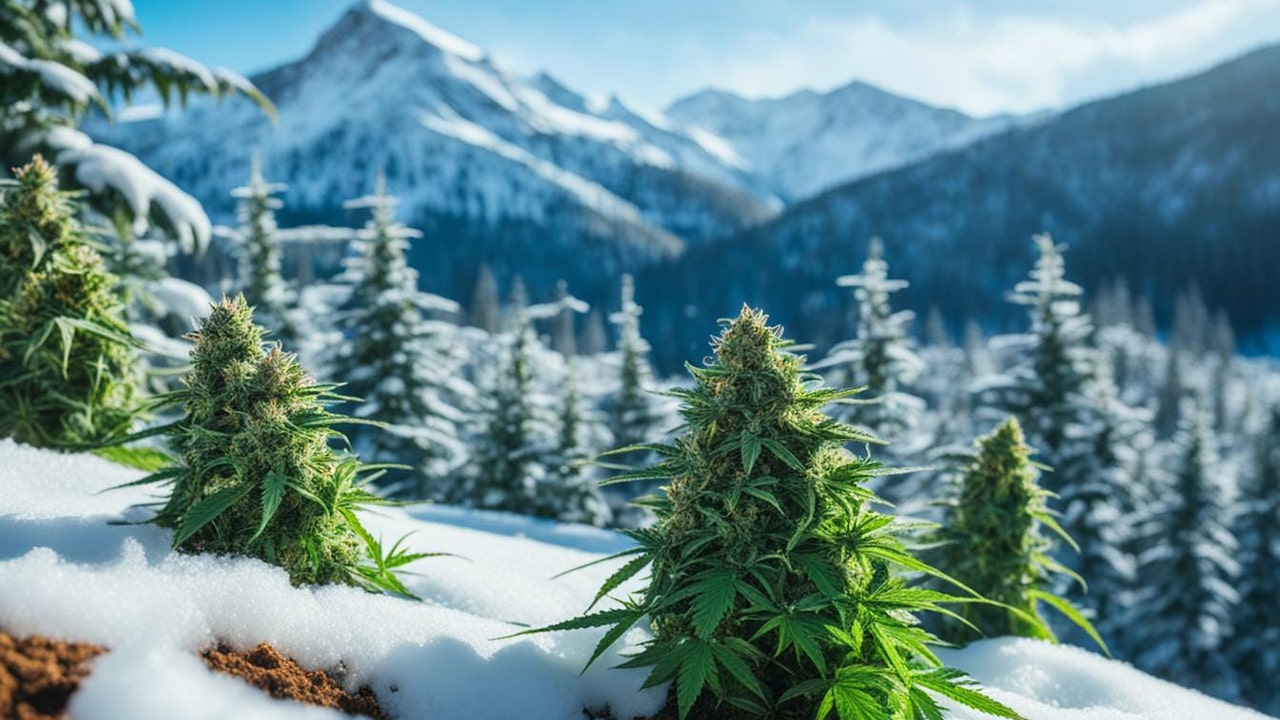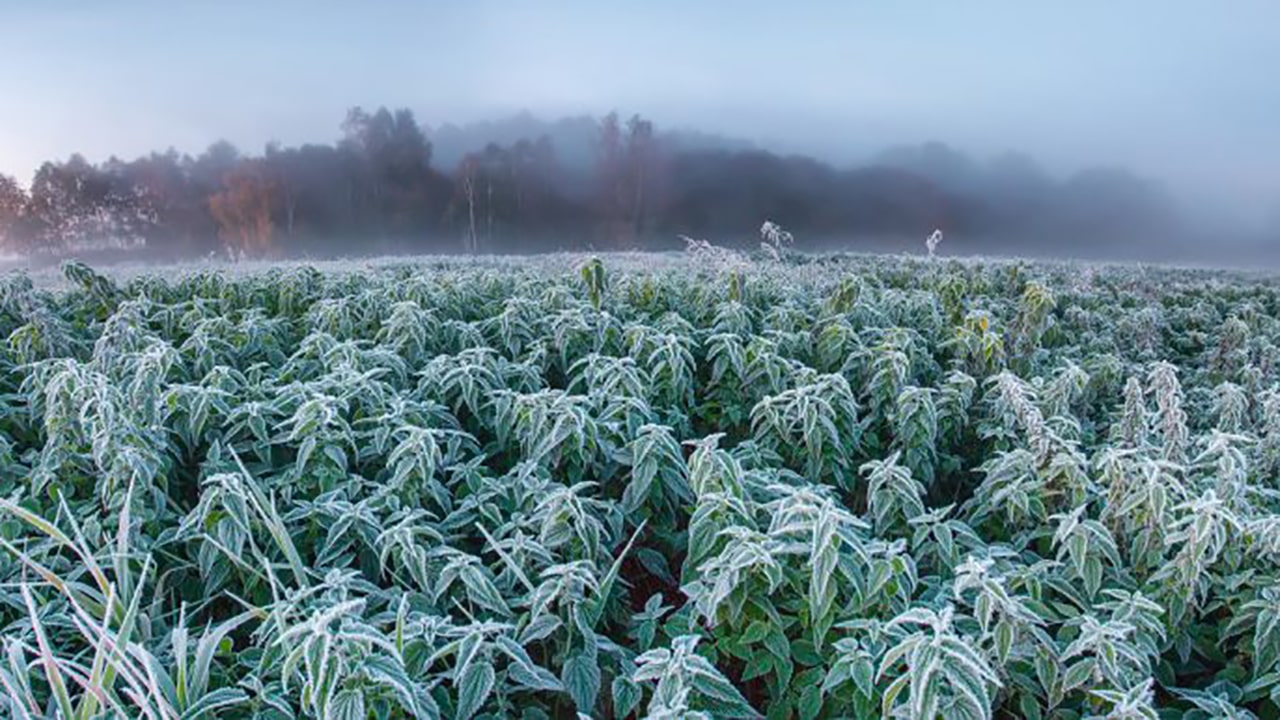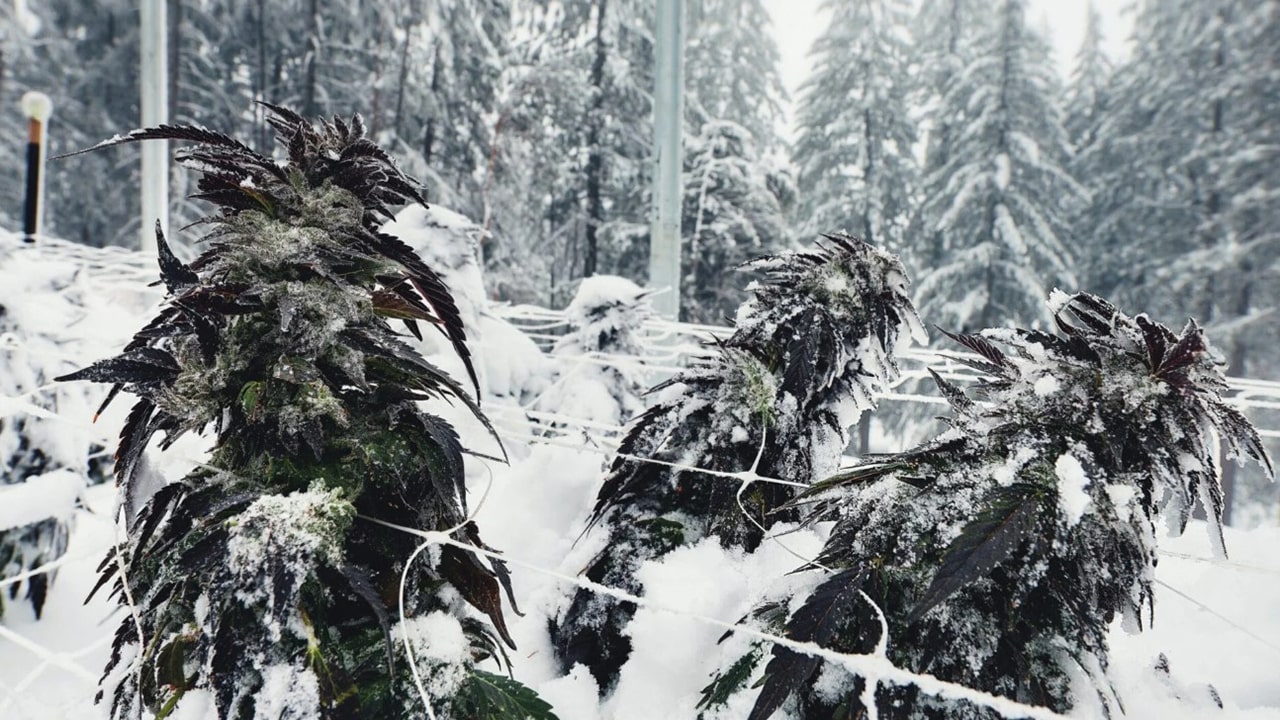Content
- General Information
- Which cannabis varieties can survive the winter outside
- How to prepare cannabis for wintering outdoors
General Information
Overwintering cannabis outside is a task that requires careful attention, especially if the climate in the region is very different from what cannabis is used to in natural conditions. Cannabis is a plant native to warm regions such as Central Asia, Africa and Southwest Asia, where it grows in sunlight and high temperatures. These conditions are a far cry from winter, especially in countries with colder climates.
Cannabis can survive some cold nights, but prolonged frosts and winter temperatures below freezing can damage or kill the plant.
Temperature requirements
The main factor affecting the ability of cannabis to survive the winter is temperature. Cannabis in its natural habitat is adapted to warm conditions where temperatures rarely fall below 10°C. In colder conditions, especially with frost, the roots of cannabis can freeze, causing the plant to die.
Sativa and indica varieties differ greatly in their temperature requirements. Sativa prefers hot and humid conditions, and its growth and development can be severely limited in colder climates. Indica, on the other hand, can tolerate cooler temperatures but still requires protection from hard frosts. Ideally, indica varieties begin to suffer at temperatures below 10°C.
Influence of light
Cannabis is a photoperiodic plant, which means that its growth and flowering depends on the length of day and night. In winter, the day length is shorter and this can affect the growth cycle of the plant. In regions with short daylight hours, cannabis may not be able to complete its cycle before frost arrives. However, autoflowering varieties, which are independent of day length and start blooming regardless of light, may be more suitable for these conditions. They move quickly into the flowering stage and usually complete their cycle before the cold weather arrives.
Influence of moisture and snow
Another important factor is humidity and precipitation. During the winter months there is often rain, snow and high humidity, which can lead to the development of fungi and mold, especially if the plants are not protected. Cannabis does not like high humidity during the cold season, as this creates the perfect conditions for diseases to develop. Therefore, proper shelter and ventilation of the plants are taken into account for successful wintering outdoors.
Caring for plants in winter
In order for cannabis to survive the cold season, it needs to be protected. For example, the use of greenhouses or shelters can significantly increase the plants' chances of survival. In winter conditions, it is especially important to protect the root system and reduce exposure to direct frost. Special insulating covers or plant shelters can help maintain an optimal temperature around the roots.
It is also important to monitor soil conditions and avoid overwatering. If the soil is too wet during the winter, the roots of the cannabis can begin to rot, leading to its death. Therefore, you should reduce watering during the winter, but make sure that the plant does not suffer from a lack of moisture.

Which cannabis varieties can survive the winter outside
When it comes to winterizing cannabis outdoors, the choice of variety is one of the most important factors that determines success or failure. Different cannabis varieties have different resistance to cold, moisture and changing weather conditions.
Varieties with Indian genes (indica)
Indica is one of the most resilient types of cannabis that has some features that make it more suitable for cold climates. It originated in the mountainous areas of Afghanistan, Pakistan and India where the climate can be quite cold, especially at night. These plants have a more compact shape, which helps them retain heat and not lose it as quickly as the taller and more spread out sativa plants.
- Indica can tolerate lower temperatures than sativa. It is not as sensitive to light frosts and can survive cold nights, but prolonged frosts and extremely low temperatures, below -5°C, can cause damage to the plant.
- Indica has a shorter growing season, which means that it moves quickly into the flowering stage. This makes it more suitable for the cooler and shorter summer seasons, when it needs to be harvested before the frosts arrive.
However, even Indian varieties cannot always survive the winter in the open without additional protection, so it is important to provide plants with shelter or frost protection during the colder months.
Varieties with Afghan genes (Kush)
Kush is a variety of Indian varieties that is also quite resistant to the cold. These cannabis varieties originate from the mountainous regions of Afghanistan and Pakistan, where the climate can be harsh, which develops the plant's ability to withstand cold nights and extreme temperature fluctuations.
- Kush varieties are known for their strong structure and cold tolerance. They are able to withstand low temperatures, but are unable to survive severe frosts unless they are protected.
- These varieties have a compact shape that allows the plants to retain heat. They complete their growing season quickly, which also contributes to their success in short daylight hours and low temperatures.
Autoflowering varieties
One of the best solutions for outdoor cannabis in cold conditions are autoflowering varieties. These cannabis varieties are not dependent on daylight hours like regular photoperiod varieties and start flowering a few weeks after germination. This makes them ideal for grooving in environments where summers are short and frost can come early.
- Autoflowering varieties go through their cycle from start to finish much faster than normal photoperiod varieties. This gives them a chance to finish blooming before the onset of cold weather and frost. These varieties typically take 8 to 10 weeks from planting to harvest to avoid winter frosts.
- Because autoflowering varieties have a shorter growing season, they can have time to produce a crop even in the face of cold nights and early frosts.
Feminised varieties
Feminised cannabis varieties are varieties that are guaranteed to produce only female plants. Female plants are important because only they produce flowers that contain THC and other cannabinoids, and tend to have a higher tolerance to various external factors, including cold temperatures.
- Female plants are generally healthier and stronger than male plants, making them more resistant to stresses such as cold nights or unpredictable weather conditions. Therefore, feminized varieties can be a good choice for wintering outside, especially if they are of the more cold-tolerant varieties such as Indica or Kush.
- For protection from winter cold, feminized autoflowering varieties are still chosen, which have the advantages of both feminized plants and autoflowering plants, increasing the likelihood of a successful overwintering and harvest.
Sativa
Sativa is a more temperature-demanding cannabis strain that prefers hot and humid conditions. Sativa plants tend to have a longer growing season and may not be able to complete their cycle before frost, especially in regions with cold winters.
- Sativa does not tolerate low temperatures and can be damaged as early as +5°C, not to mention frost. It requires a warm climate and plenty of sunlight for normal growth and flowering.
- Sativa varieties usually require longer daylight hours for normal flowering, making them unsuitable for wintering outdoors in cold climates.

How to prepare cannabis for wintering outdoors
Preparing cannabis plants for wintering outdoors is an important and responsible process that involves several key steps. In order for the plants to survive the cold season, they need to be protected from frost, snow and other unfavorable conditions.
Choosing the right variety and planting time
The first step in preparing your cannabis for overwintering is to choose the right variety. As we have already discussed, indica and autoflowering varieties are best suited for overwintering, as they have a short growth cycle and can finish flowering before frost. It is also important to consider the climatic conditions in the region.
Autoflowering varieties. These varieties start blooming regardless of daylight hours, which gives them a significant advantage when grooving in cold climates. They usually complete their cycle in 8-10 weeks, allowing them to be harvested before the onset of hard frosts.
Indica varieties such as Kush or Afghan Kush have compact plants and can tolerate moderate frosts. However, they still need protection from extreme cold, especially in regions where winters are harsh.
Sativa varieties are less suitable for wintering outside, as they require a long growing season and high temperatures.
Covering plants
One of the most effective ways to protect cannabis from the winter cold is to use shelters. The protection helps create a more stable temperature around the plant, prevents the roots from freezing, and retains the moisture needed for growth.
Building a greenhouse or greenhouse is one of the best ways to keep plants safe from the winter cold. Greenhouses maintain a higher temperature than the outdoors, which helps cannabis plants survive the cold weather. It is especially helpful to use clear plastic covers, which will allow good light penetration and protect from wind and rain.
Agrofiber, a material that retains heat and protects plants from the cold while maintaining good ventilation, is often used to cover plants. Agrofiber is an easy, convenient and economical way to insulate cannabis plants during the cold season.
Mulching the soil around the plants helps to retain heat in the roots. Sawdust, dry grass or leaves are used for this purpose. Mulch also helps retain moisture and prevent evaporation, which is important during the cold season when the ground can dry out.
Root protection
The root system of cannabis is very sensitive to frost and damage to it can lead to the death of the plant. Therefore, root protection is another key aspect of preparing cannabis for winterization.
One way to protect the roots is to transplant the plants into larger containers if possible. This allows the plants to be moved to warmer areas or shelters in case of hard freezes. Containers provide additional protection and allow you to control conditions for the roots, such as avoiding freezing.
If cannabis is grown in the open, various materials are used to insulate the soil and protect the roots from the cold. For example, adding a layer of dry leaves, hay or straw around the stem of the plant will prevent the roots from freezing.

Warning! Errors Seeds does not encourage you to grow cannabis and does not promote it in any way. Cultivation is prohibited by the legislation of Ukraine. The article is of scientific and introductory interest only.


Write a comment